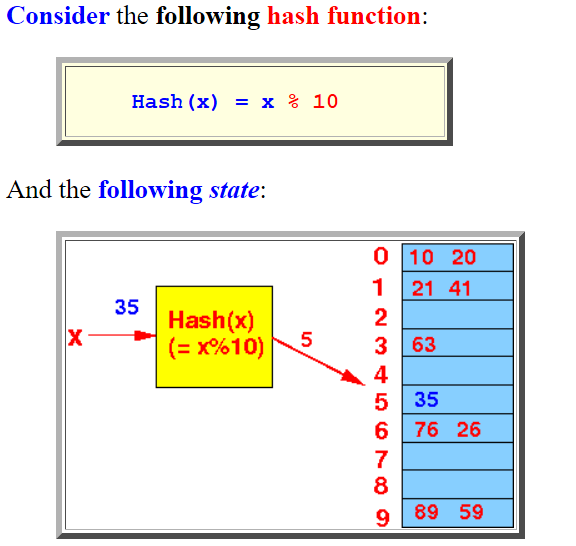Slideshow:
- Consider the
following
hash function:
Hash(x) = x % 10And the following state:

- Extensible Hashing
introduces an
extra level of
mapping:
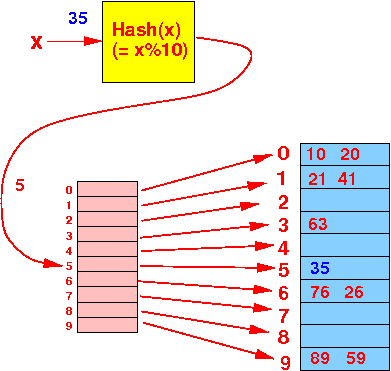
- Suppose that we
change the
hash function to:
Hash(x) = x % 20In Extensible Hashing, we will double the logical hahs table:
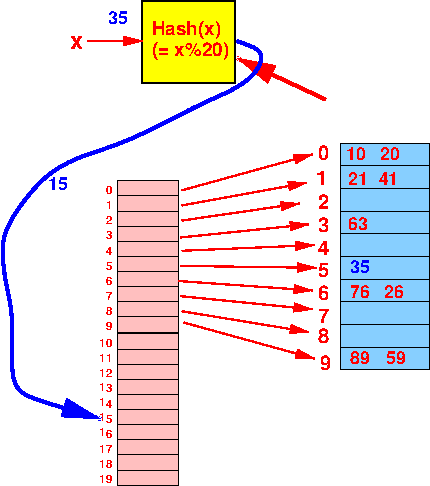
We do not have to re-hash any search key to make the new hash function work.
We just map the new logical hash buckets to the correct physical hash buckets:
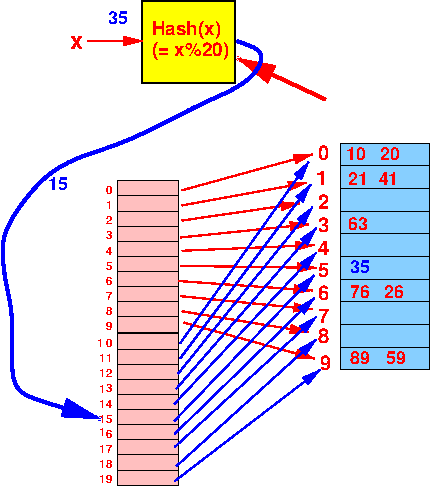
- Furthermore,
we can accomodate
bucket overflow
graduately:
- Suppose we insert
the search key 39
into a full bucket:
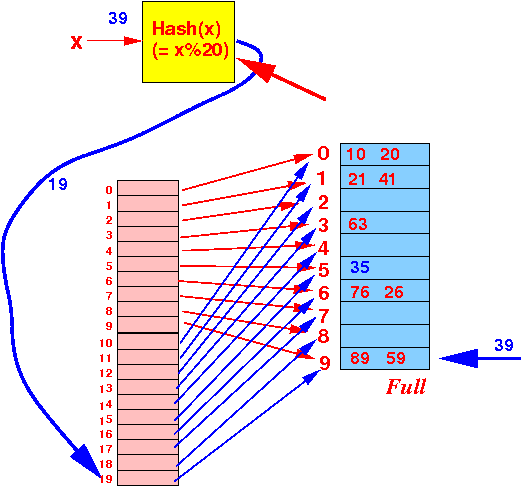
- We do not need to
split
all buckets !!!
We only have to split the overflow bucket:
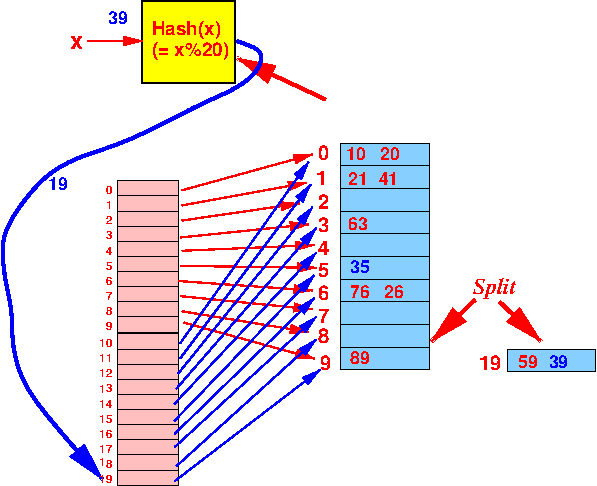
And then link the new (physical) hash bucket to the hash table:
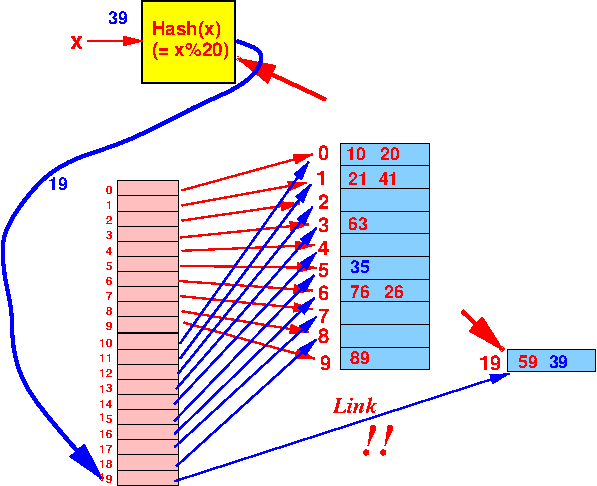
- Suppose we insert
the search key 39
into a full bucket:
